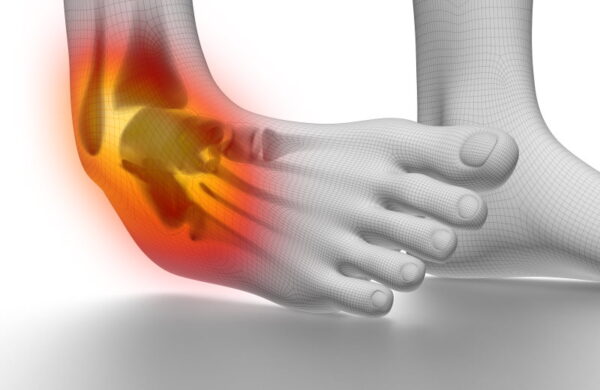Ankle sprains are one of the most common injuries that often occur during sports, exercise, or even daily activities. While most people recover from their first sprain with time and rest, for some, the injury becomes a recurring issue. Repeated ankle sprains can lead to chronic pain, instability, and long-term consequences if not addressed properly. In this blog, we will explore why repeated ankle sprains occur and how Essential Health Physiotherapy Shailer Park can help manage and prevent them.
What Causes Repeated Ankle Sprains?
Ankle sprains typically occur when the ligaments in the ankle are stretched or torn, often due to an awkward landing or rolling of the foot. However, some individuals may experience repeated sprains due to a variety of factors, including:
- Weak or Imbalanced Muscles: Weakness in the muscles surrounding the ankle joint can result in a lack of proper support, leading to increased susceptibility to sprains.
- Poor Proprioception: Proprioception refers to your body’s ability to sense its position in space. After an initial sprain, proprioception may be compromised, making it difficult to avoid further injuries.
- Inadequate Rehabilitation: If an initial sprain is not fully rehabilitated, it may lead to a higher chance of re-injury. Skipping important recovery steps such as strengthening exercises, balance training, and range-of-motion activities can result in an unstable ankle joint.
- Improper Footwear: Wearing shoes that do not provide proper support, cushioning, or stability can also increase the risk of repeated sprains, particularly during physical activities.
- Overuse and High-Impact Activities: Athletes who engage in high-impact sports such as basketball, soccer, or running may be more prone to repeated ankle sprains due to the constant stress on the ankle joint.
Why Repeated Sprains are a Concern

Repeated ankle sprains are more than just an inconvenience; they can have serious long-term effects if not addressed appropriately:
- Chronic Instability: As a result of recurrent sprains, the ligaments and tissues around the ankle may become weakened, leading to a feeling of instability when walking or engaging in physical activities.
- Osteoarthritis: Multiple sprains can increase the likelihood of developing osteoarthritis in the ankle joint over time. This occurs as the repeated trauma to the joint leads to cartilage wear and tear.
- Decreased Performance: For athletes, repeated sprains can hinder performance, preventing them from reaching their full potential due to pain, stiffness, and limited range of motion.
How Essential Health Physiotherapy Shailer Park Can Help
Physiotherapy plays a crucial role in managing repeated ankle sprains, helping to address both the immediate symptoms and the long-term consequences. Here’s how our physiotherapists can assist:
1. Rehabilitation after Injury
After an initial sprain, our physiotherapists can help you recover by guiding you through a structured rehabilitation program. This includes:
- Pain management: Using techniques such as ice, heat, or electrotherapy to reduce pain and swelling.
- Range of motion exercises: These help restore the full movement of the ankle joint.
- Strengthening exercises: Targeting the muscles around the ankle (such as the calf, tibialis anterior, and peroneal muscles) to provide stability and reduce the risk of future sprains.
2. Proprioception Training
Another key element of rehabilitation is proprioception. Physiotherapists use balance exercises (like standing on one leg or using balance boards) to improve your body’s awareness of the ankle’s position, which can help prevent re-injury.
3. Functional Training and Sport-Specific Exercises
For athletes or those involved in regular physical activities, physiotherapists incorporate functional training that mimics the specific movements involved in their sport. This helps them build the strength and coordination necessary for those movements, reducing the likelihood of sprains in the future.
4. Taping and Bracing
In some cases, our physiotherapists in Shailer Park may recommend ankle taping or a brace as a temporary solution to stabilise the ankle during recovery and reduce the risk of reinjury.
5. Footwear Advice
Physiotherapists can also assess your footwear to determine if it contributes to ankle instability. They may recommend specific shoes or orthotics to provide better support.
6. Prevention Programs
Once the ankle has healed, physiotherapists/Exercise Physiologists will work with you to implement a prevention program. This includes ongoing exercises to maintain ankle strength and flexibility, as well as how to avoid situations that might lead to sprains in the future.
Preventing Future Sprains: Tips and Advice
While physiotherapy plays a critical role in rehabilitation, there are other steps you can take to prevent future ankle sprains:
- Warm up properly before physical activities to prepare the muscles and joints for movement.
- Strengthen the lower leg muscles regularly with exercises like calf raises and resistance training.
- Maintain balance and flexibility through yoga or specific stretches targeting the ankle and lower leg.
- Pay attention to your environment—be mindful of uneven surfaces when walking or running.
- Invest in proper footwear that supports the arch and provides stability, especially during physical activity.
Conclusion
Repeated ankle sprains can be frustrating and debilitating. With the right physiotherapy treatment, it is possible to recover fully and reduce the likelihood of future injuries. By addressing issues like muscle weakness, poor proprioception, and improper rehabilitation, Essential Health Physiotherapy Shailer Park offers an effective solution to restore strength, stability, and confidence in your ankle joint. If you have experienced multiple sprains, don’t wait for the next one to occur—consult with us to start your recovery journey today!
Call us at 07 3132 0898 to Prevent Ankle Sprains.
Check our Previous Blogs


